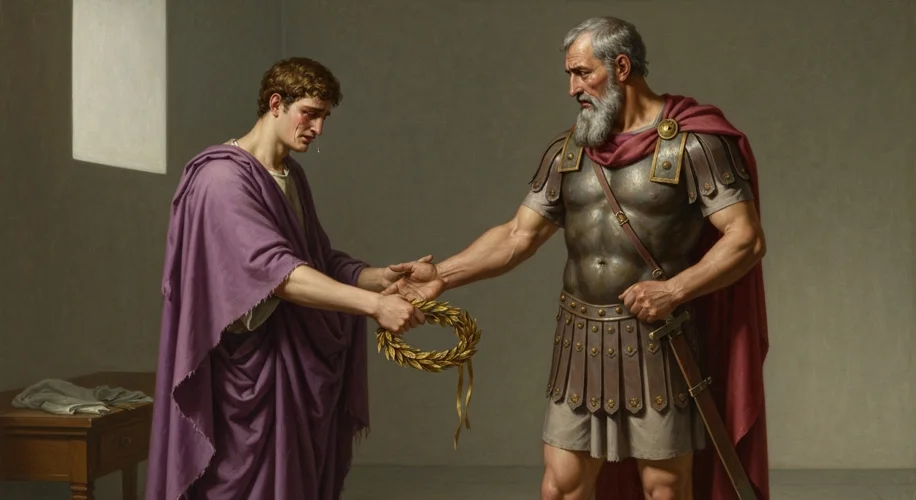The year is 476 AD. Imagine the mighty Roman Empire, a colossus that had bestrode the Western world for centuries, its legions once marching from the sands of North Africa to the misty shores of Britannia. Its roads, engineering marvels, had knit together a vast civilization, its laws had shaped justice, and its culture had permeated the very fabric of life. Yet, as the sun began to set on this Augustan age, a different kind of power was stirring, not from within its gilded palaces, but from the rugged lands beyond its borders.
For generations, the Roman Empire had been a melting pot, absorbing peoples and traditions. But as the empire grew, so did its internal stresses. Economic woes, political instability, and an ever-increasing reliance on mercenary troops, often of Germanic descent, had weakened its core. The vast frontiers, once symbols of strength, became porous membranes, through which waves of migrating peoples, sometimes fleeing other invaders like the Huns, began to press.
Into this landscape stepped Odoacer, a chieftain of the Heruli, a Germanic people. He wasn’t a king seeking to conquer in the traditional sense, but a leader of soldiers who had long served Rome, yet felt their loyalty was unrewarded. Odoacer and his men had seen the rot within the empire, the decadent emperors, the corrupt officials, the endless civil wars. They had grown accustomed to the spoils of empire, but now found themselves on the receiving end of its neglect.
The last flicker of Western Roman imperial authority rested on the shoulders of a boy emperor, Romulus Augustulus, ironically named after Rome’s founder and its first emperor. He was a mere puppet, a symbol of a power that no longer truly existed. His reign was brief, ignominious, and ultimately, doomed.
In a move that would echo through history, Odoacer marched on Ravenna, the Western Roman capital at the time. There was no grand battle, no epic last stand. Instead, it was a quiet, almost anticlimactic, end. Odoacer confronted Romulus Augustulus, not with a declaration of war, but with a demand. He asked the young emperor to abdicate, to surrender the imperial regalia.
The boy emperor, likely advised by a terrified court, complied. The symbols of imperial power – the diadem, the scepter, the purple robes – were sent east to Constantinople, to the Emperor in the Eastern Roman Empire. It was a powerful statement: the Western Empire no longer had its own emperor. Odoacer, rather than claiming the title of king for himself, chose to rule as ‘patrician’ of the Western Roman Empire, nominally under the authority of the Eastern Emperor, but in reality, the supreme ruler of Italy.
The deposition of Romulus Augustulus in 476 AD is traditionally marked as the ‘fall’ of the Western Roman Empire. But this was not a sudden, cataclysmic event. It was the culmination of centuries of slow decline, a gradual unraveling of political, economic, and military strength. The empire had been shrinking for years, its territories lost to various Germanic tribes who had established their own kingdoms on former Roman soil – the Visigoths in Spain, the Franks in Gaul, the Vandals in North Africa.
The consequences of this ‘fall’ were profound. It ushered in a new era in Western Europe, often called the Middle Ages or the Dark Ages, though historians now prefer terms like the Early Middle Ages to avoid the loaded connotations. The unified political structure of the Western Roman Empire collapsed, replaced by a mosaic of smaller, often warring, kingdoms. Trade networks fractured, cities shrank, and literacy declined in many regions.
Yet, it was not an end, but a transformation. The legacy of Rome endured. Roman law, language (Latin, which evolved into the Romance languages), and Christianity, which had become the state religion of the empire, continued to shape the emerging kingdoms. The Church, in particular, stepped into the vacuum left by the imperial administration, becoming a unifying force and a preserver of classical knowledge.
The story of Rome’s fall is a potent reminder of the fragility of even the mightiest empires. It teaches us that power is not static, and that internal decay can be as devastating as any external enemy. It’s a narrative of shifting sands, where the old order crumbles, making way for the seeds of new civilizations to sprout in the fertile ground of history.

